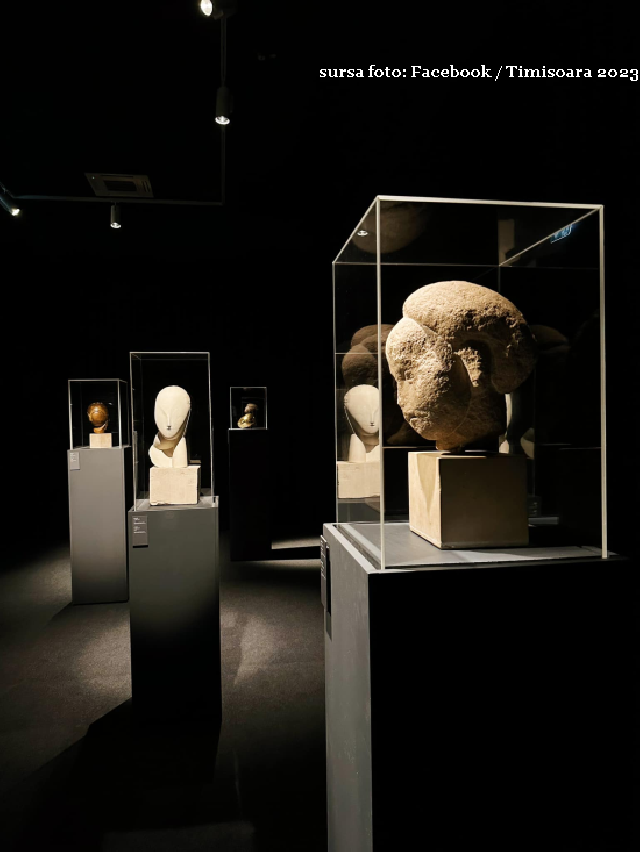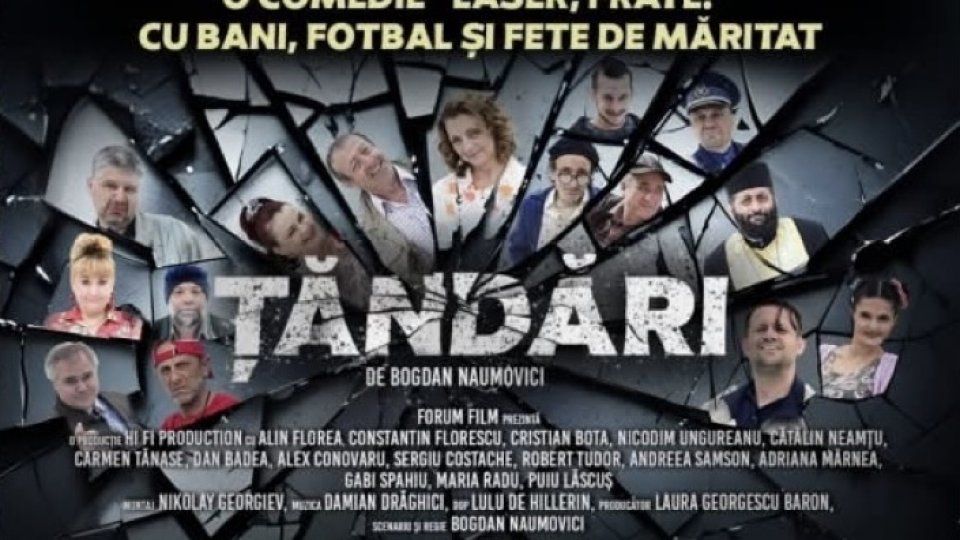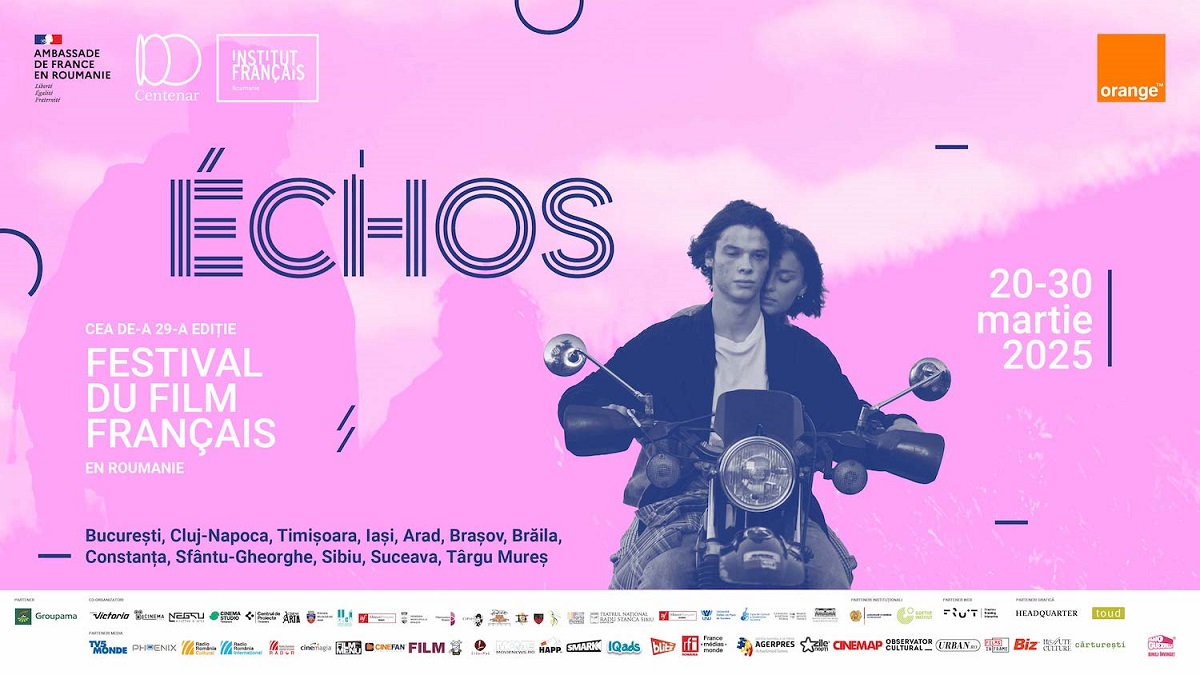Romania’s first large-scale exhibition dedicated to Constantin Brancusi
Works by Constantin Brancusi exhibited in Timisoara

Eugen Cojocariu, 07.10.2023, 14:00
Timisoara is the European Capital of Culture in 2023. As part of the program titled Timisoara 2023: European Capital of Culture, in late 2023 and early into 2024, Romanias and Eastern-Europes most important exhibition-event in the past 50 years will be mounted, dedicated to Constantin Brancusi. The exhibition is titled Brancusi: Romanian sources and universal perspectives.
Constantin Brancusi (1876-1957) was a Romanian sculptor with a groundbreaking contribution to the renewal of the fine arts language and perspective in contemporary universal sculpture. Brancusi was a true icon, being also dubbed the father of modern sculpture. Brancusi began his artistic career in Romania. Then, in 1903, he continued his artistic activity in Paris, with his maturity works being created in France.
In Bucharest in early September, in the main building of The National Bank of Romania, the press conference was held, whereby the details were presented to the audience, of the event-exhibition in Timisoara.
We sat down and spoke to Ovidiu Sandor, the President of the Art Encounters Foundation and the Commissioner of the exhibition dedicated to Brancusi. Here is Ovidiu Sandor himself, telling us what the exhibition represents for the visitors:
“I think the exhibition is important in various respects. It is Romanias first exhibition in 50 years, dedicated to Brancusi. I believe this symbolic return of Brancusi to his native country is somehow important, if we also consider the context of what happens around us and, in the difficult moments like the ones weve been going through, returning to these landmarks of ours, of the Romanians, of Romanian culture, returning to Brancusi, I believe that is something important. It is an exhibition we have once in a generation. It is an opportunity for everybody see Brancusi in his younger years, but also his maturity works, the works that made him famous. A special introduction, in a curatorial discourse offered by Doina Lemny, presenting, in a balanced way, the entire Romanian influence Brancusi carries with him, in great proportion, when he sets off to Paris, but also the whole process of transformation and refining, in the buildup to Brancusis works, and their universal importance.”
Ovidiu Șandor also spoke about the works that are on display as part of the exhibition:
” …we all think we know Brancusi, yet it is important for us to see his works for real, to immerse in this Brancusi universe the exhibition proposes, with the more than 100 works on display, where we have the chance to see his various preoccupations: sculpture, drawing, presented in their relationship with Romania, but also in connection with what ties Brancusi to his native country, but also with that relevance in universal fine arts Brancusi accomplished. We will bring an important set of sculptures. There are more than 20 sculptures. There will be his iconic sculptures, “Măiastra”, “Bird in Space” “Mademoiselle Pogany”, “The Kiss” and suchlike, but also less well-known sculptures, such as “Terminal Border”, a work Brancusi created in 1945, when Romania lost Bessarabia, and, concurrently, we will also have segments of his work that are less well-known, such as photography, drawing, of course, since drawing is important for any sculptor, documents revealing the way he maintained contact with certain people at home. Film, a film made by Brancusi, film made by other relevant artists featuring Brancusi. So it is a presentation, even if it does not seek to be a retrospective in scope, it is an exhibition which, synthetically, succeeds to present the complexity of his works and the various preoccupations he had as an artist and, of course, beyond that, Brancusi the man bubbles beneath the surface. Yet apart from the exhibition we are preparing an important catalogue, a very serious publication, also coordinated by Doina Lemny, including 16 new contributions on Brancusi, besides, also worth mentioning could be the fact that it is the first Brancusi exhibition where Brancusi is placed in the Romanian context. “
Here is what the curator of the exhibition and one of the leading international experts on Constantin Brancusis art, Doina Lemny, told us:
“It is a symbolic return, and I say that every time, a symbolic return of Brancusi to his native country which he never left, in his psyche. Brancusi was the same person who was attached to his country, yet he developed in France. If we try to judge him, why he gave the studio, the old story, why he offered France his studio, that happened because there, for fifty years, he created all his masterpieces. Yet he knew all too well his early works were at home, that is those of the Museum in Craiova and the National Art Museum in Bucharest. “
Doina Lemny went on to give us detailed info on the origin of the works included in the exhibition titled Brancusi: Romanian sources and universal perspectives.
“The two museums, we considered two museums alone, two museums and the Foundation in Venice, being already confined by the area offered by the museum in Timisoara, which is not a very generous one. There are very few rooms, exhibitions halls, 11, and the sculptures cannot be crammed or heaped up so you can present them all in one go, because otherwise they are not visible, they kill each other. So we made an appeal to two museums, to the generosity of two great museums, Tate Gallery, which lent three of the four works they have, and we need to praise that, and the Pompidou Centre which, through Brancusis Studio, owns the worlds greatest collection of works. We did not approach the American museums for space-related reasons, as I said, and also for financial reasons. “
Here is Doina Lemny once again, this time telling us what, in her opinion, Brancusi the artist meant:
“Brancusi means a man I need to question permanently, and that because he keeps his mystery. The more I advance, the greater the number of the questions I ask myself about this man who knew how to analyze every moment in life and how to render it, since he rendered shapes but he did nor render the being, he did not reproduce, he reproduced an idea instead yet he did not reproduce a character. For me, Brancusi remains a mystery and no, maybe I do not have that urge to grasp his mystery completely. Actually, he himself used to say:” Do not ask the creators, besides, the veil doesnt have to be revealed, lifted completely. “





























